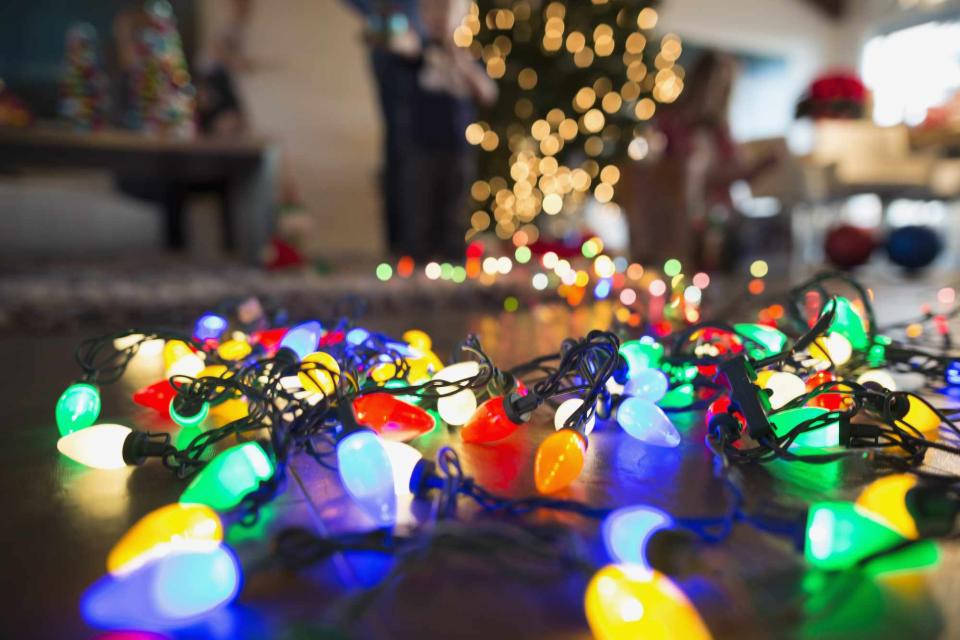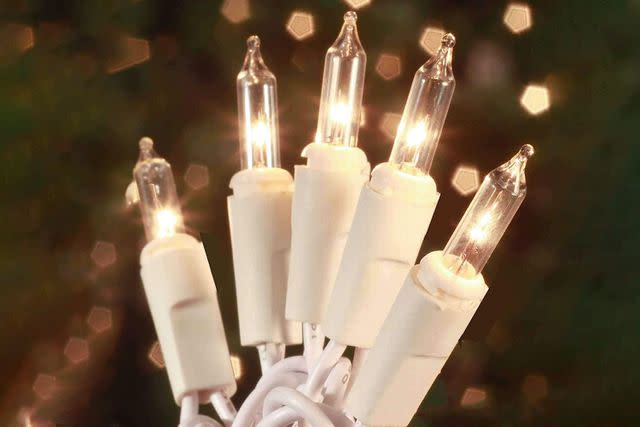How To Store Christmas Lights The Right Way
Save yourself a headache next year, and follow these tips that will aid in how to store Christmas lights.

It might as well be a scene from a horror movie: You turn on the lights in that one special closet, or flip the switch to illuminate your basement. You slowly trudge toward your holiday decorations, and there you find the tangled, twisted, only partially functional strands of Christmas lights you hurriedly stuffed in a box last year when you just couldn’t look at them anymore.
Never fear—help is here! This year, we’re going to make sure you’ve got a game plan heading into Christmas that will actually allow you to decorate with the end in mind. Read through a few of your options and choose your own post-holiday adventure.
Wrap Your Lights Around Cardboard
One of the benefits of the holiday season is that we can repurpose the (no doubt) loads of boxes arriving from thither and yon. Here's how to make your boxes work for you:
Use a box cutter to slice a 12x6 inch section from a packing box.
Starting at one end, wrap your lights widthwise around the cardboard, making sure to leave a little slack in the line (pulling your strands too tightly can cause electrical shorts).
When you get to the last few inches of your string, carefully tuck the male and female ends of your cords behind an already-wrapped strand.

Use A Power Cord Wheel
These little treasures are available at most hardware stores (in fact, lots of companies have started selling their lights already loaded onto one for extra ease!), and will make wrapping and unwrapping a true cinch. The trick here is to ensure your lights are gently coiled, since the spinning of the wheel could accidentally crush a bulb. Usually capable of holding three to four strands at a time, these wheels sometimes come with a waterproof bag to stack them within for extra safety.
Get Manual
Maybe the easiest way to wrap and store lights requires no extra props, just a little finesse. Long used by roadies at rock shows, wrapping lights into a tight, self-contained ball around the width of your hand or length of your forearm is a fool-proof method. Here's how to use your hands:
Hold one hand sideways and start with one end of a strand dangling about 6 inches from your palm.
Loosely wrap the remainder of the strand around the width of your hand, leaving the end dangling.
When you arrive at the other end, slide the now-oval-shaped ball off your hand, wrapping the two ends through the center of the circle, then clipping them together.
This method is best for storing in a box; for hanging on a peg board, use the same method, but instead wrap from the crook of your thumb underneath your elbow and back. Best stored between layers of newspaper or tissue paper for added cushion.

Amazon
Keep The Original Boxes
If you’re buying new lights this year to replace an old strand or switch from warm whites to colorful bulbs, keep the boxes. Most light manufacturers send out lights wrapped with huge twist ties, which come in handy when it’s time to break Christmas down again. Using the twist ties, some of which are large enough that they could be snipped in two to pull double-duty, keeps your lights neatly separated.
Replace And Bargain Shop
As for the lights that have seen better days? Don’t store them for yet another year of disappointment when only half your tree glows. If you’re not prepared to replace problematic bulbs, discard those strands and, if you’re really savvy, head out to buy Christmas lights in the days immediately following the holiday. Discounts abound and your future self will thank you.
Whatever method you choose, the real key is gentleness and intentionality. By handling your lights with a little care, you’ll ensure a longer life span and an easier Christmas season next year.
Related: Outdoor Christmas Light Ideas
For more Southern Living news, make sure to sign up for our newsletter!
Read the original article on Southern Living.

